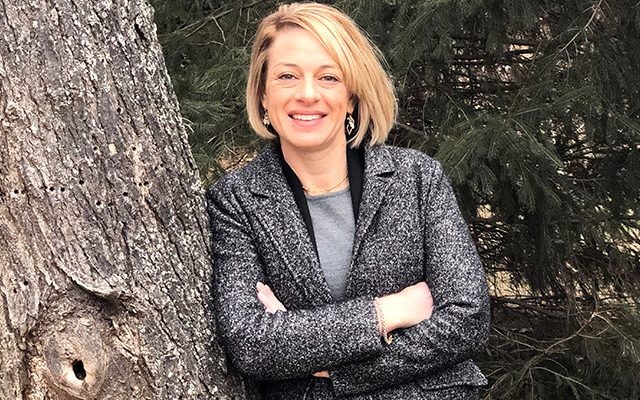Sustainability is about the future, and while so much of what sustainability now encompasses is less ‘concrete’, I have found that each of our projects has an intentional, sustainability-focused goal – ranging from energy reduction, reducing grid dependency, organics diversion, greenhouse gas reduction, to water management, flood control, water system preservation, and protection of critical infrastructure.
It has often been said that if you can’t measure it, it doesn’t exist. The clear message to me, as I progress through the winding path of environmental conscious planning, building, and restructuring with our clients, is that there is no map, but we better have a measuring tape, a gauge, or a scale, otherwise we are not going to get very far.
There are a variety of factors that contribute to sustainability, including efficiency, renewable and reliable energy, equipment life span, conservation, emissions, resiliency, environmental justice, etc. How are we going to quantify sustainability in a way that’s comprehensible, and most critically, meaningful?
Sustainability can feel like a moving target, shifting with regulations, social factors, economic conditions, even the latest weather patterns. Our eyes blur – we lose focus. I find that an effective approach is to re-frame and embrace the unsettling task of shifting the boundaries of what and how we are measuring within the context of sustainability. Are we changing the rules? No, we are evolving; just like the technology that’s available to us. You know you are making progress in your approach to quantifying your sustainability impacts and progress when it gets uncomfortable.
Defining not just the goals but the specific factors to be considered and the depth and reach of the impact, time frame of future outlook, geographic region to consider, as well as air/water/energy effects, and the influence on the community and economic conditions – this is how I start to construct the parameters to monitor, compare, interconnect, and ultimately benchmark and report on.
Conditions can change and lead to new opportunities for sustainability. We want to continue to think critically about how we are comparing and if our goals are realistic. How much can we work with equipment to improve its efficiency without losing the reliability of the system?
The natural inclination is to list, queue up, and plan, along with holding a few focus group meetings to gain the insight that only a diverse cross-section of stakeholders can bring. However, the success will be in the results, and how well we are able to show, to count, to quantify, and to measure the specific actions and initiatives that have been so carefully laid out.
Our focus continues to be on gathering, modeling, and analyzing data that is both meaningful and drives action. This requires that the parameters be tailored to project type and the policy drivers, and that they be interconnected, weighed against each other, and collectively evaluated. This can include industry and sector specific benchmarks, which is part of the on-going movement towards tools that are encompassing and adaptable, but at the same time accessible and user friendly. We value the analytics based on their ability to clearly define the conditions, predict the applicable future impacts, and propel action and improvement.
We are working towards providing clarity on the improvements data-based insights can provide for sustainability, life cycle costing, asset performance, and energy management. The network that I rely on of professionals and researchers from a broad cross-section of engineering fields, government sectors, educational institutions, and technology developers is the core through which an understanding of the links between sustainability’s morphing elements can be developed.
As the struggle continues regarding ‘who pays’ and ‘who benefits’, and while time frames and reasonable future projections are considered, there is growing importance to prove that the results are tangible – for ourselves, for the community that relies upon us and our services, and for the rate/tax payers from whom the investment has been made.
Is sustainability somewhere in your mission statement, stated in the annual goals, or in your strategic plan? Our dedication to the future is real, but do these broad initiatives indicate how we are to measure it, account for it, and report on it? Often it might: a percentage of water to be saved, a specific quantity of energy use to be reduced or created, or tonnage of waste diverted. We know how to account for kilowatt-hours, gallons, carbon quantities, solid waste tonnage, however we are actively moving towards broader more meaningful modeling that incorporates the interconnection of these variables.
As an engineer, I love data and well documented results, but it is critical to recognize the interconnection of the various facets of sustainability, and utilize all of our available tools to measure it – in particular the coincident benefit that may result outside the boundaries of our original intent.
Sustainability is by intention a word that encompasses both environmental and social impacts, as well as financial benefits and cost.
I have enjoyed the satisfaction of a simple payback calculation, the visual impact of a regression analysis of past energy costs, and the clarity of well calibrated flow meter data, but we know that this separation – linear outcomes – and our neat vertical columns are already blurred. The new methods we are developing to envelope the ecosystem of sustainability goals require us to draw a web, not a line…to get uncomfortable with the volume of factors to consider and the boundaries we need to venture beyond, such that our ability to measure ensures the sustainable future exists.
We can’t abandon the data in hopes that a lively discussion among the right people will shine a light down the true and straight path to sustainability.
